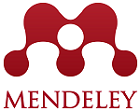Peering Through the Digital Window: Assessing Online Disclosure of the Public Procurement Data in Bima City
Abstract
This article explores the level of "online data disclosure" or "website-based transparency" concerning Open Government and Electronic Public Procurement. It specifically focuses on the availability and accessibility of procurement data on the official public procurement website of the Bima City Government, which can be found at https://lpse.bimakota.go.id/eproc4. The transparency indicator used by researchers to explore this issue is the Municipal Transparency Index (MTI) from Portugal's Transparência e Integridade Associação Cívica (TIAC). The unit of analysis boils down to website-based transparency of public procurement documents and the activities inherent in its management. The researchers used two types of data, namely (i) primary data, obtained directly through in-depth interviews with several informants determined by purposive sampling technique, from the management of the government's electronic procurement system; and (ii) secondary data, obtained through a literature study of official documents, mass media articles, internet news sites, and others. This research is intended to add to the empirical case study on the level of website-based transparency managed by local governments in Indonesia, where this aspect is reflected by data openness in its provision and accessibility, which is an important prerequisite for building transparency and a core part of the Open Government initiative. The official website of the Bima City Government's EPP currently does not show an indication of ideal openness in terms of data availability and accessibility, due to specific constraints in the form of budget limitations, staff competence, and the commitment of political leaders. Corruption allegations against certain elite in the city illustrate the vulnerability of goods and services procurement to the worst maladministration practices or abuse of power.
References
Adjei-Bamfo, P., Domfeh, K. A., Bawole, J. N., Ahenkan, A., Maloreh-Nyamekye, T., Adjei-Bamfo, S., & Darkwah, S. A. (2020). An e-government framework for assessing readiness for public sector e-procurement in a lower-middle income country. Information Technology for Development, 26(4), 742–761. https://doi.org/10.1080/02681102.2020.1769542
Azamela, J. C., Tang, Z., Ackah, O., & Awozum, S. (2022). Assessing the antecedents of e-government adoption: A case of the Ghanaian public sector. SAGE Open, 12(2), 21582440221101040. https://doi.org/10.1177/21582440221101040
Campbell, D. T., & Stanley, J. C. (2015). Experimental and quasi-experimental designs for research. Ravenio books.
Creswell, J. W., & Poth, C. N. (2016). Qualitative inquiry and research design: Choosing among five approaches. Sage publications.
Croom, S., & Brandon-Jones, A. (2007). Impact of e-procurement: Experiences from implementation in the UK public sector. Journal of Purchasing and Supply Management, 13(4), 294–303. https://doi.org/10.1016/j.pursup.2007.09.015
da Cruz, N. F., & Marques, R. C. (2014). Scorecards for sustainable local governments. Cities, 39, 165–170. https://doi.org/10.1016/j.cities.2014.01.001
da Cruz, N. F., Tavares, A. F., Marques, R. C., Jorge, S., & De Sousa, L. (2016). Measuring local government transparency. Public Management Review, 18(6), 866–893. https://doi.org/10.1080/14719037.2015.1051572
Dooley, K., & Purchase, S. (2006). Factors influencing e-procurement usage. Journal of Public Procurement, 6(1/2), 28–45. https://doi.org/10.1108/JOPP-06-01-02-2006-B002
George, A. L., & Bennett, A. (2004). Case studies and theory development. MIT Press.
Georgieva, I. (2017). Using Transparency against corruption in public procurement: A comparative analysis of the transparency rules and their failure to combat corruption. Springer International Publishing.
Gerring, J. (2004). What is a case study and what is it good for? American Political Science Review, 98(2), 341–354. https://doi.org/10.1017/S0003055404001182
Grimmelikhuijsen, S. G. (2010). Transparency of public decision‐making: Towards trust in local government? Policy & Internet, 2(1), 5–35. https://doi.org/10.2202/1944-2866.1024
Gurakar, E. C., & Tas, B. K. O. (2016). Does public e-procurement deliver what it promises? Empirical evidence from Turkey. Emerging Markets Finance and Trade, 52(11), 2669–2684. https://doi.org/10.1080/1540496X.2015.1105603
Iswanto, D., Rifaid, R., Rusnaedy, Z., & Sadar, S. (2022, July). After E-Procurement: Is There Still Corruption in the Procurement of Goods and Services?. In Proceedings of the 1st International Conference on Social, Science, and Technology, ICSST 2021, 25 November 2021, Tangerang, Indonesia.
KPK-RI. (2023). KPK tetapkan tersangka pengaturan proyek dan gratifikasi di Pemkot Bima. Retrieved October, 11, 2023. Available from: https://www.kpk.go.id/id/berita/siaran-pers/3269-kpk-tetapkan-tersangka-pengaturan-proyek-dan-gratifikasi-di-pemkot-bima
Lathrop, D., & Ruma, L. (2010). Open government: Collaboration, transparency, and participation in practice. O'Reilly Media, Inc.
Lee, S. Y., Díaz-Puente, J. M., & Martin, S. (2019). The contribution of open government to prosperity of society. International Journal of Public Administration, 42(2), 144–157. https://doi.org/10.1080/01900692.2017.1405446
McDermott, P. (2010). Building open government. Government Information Quarterly, 27(4), 401–413. https://doi.org/10.1016/j.giq.2010.07.002
Milić, P., Veljković, N., & Stoimenov, L. (2022). Using OpenGovB transparency indicator to evaluate national open government data. Sustainability, 14(3), 1407. https://doi.org/10.3390/su14031407
OECD. (2014). Recommendation of the council on digital government strategies. Retrieved March, 18, 2023. Available from: www.oecd.org/gov/digital-government/Recommendation-digital-governmentstrategies.pdf
Puspita, A. C., & Gultom, Y. M. (2022). The effect of e-procurement policy on corruption in government procurement: Evidence from Indonesia. International Journal of Public Administration, 1–13. https://doi.org/10.1080/01900692.2022.2093900
Rustiarini, N. W., Sutrisno, T., Nurkholis, N., & Andayani, W. (2019). Why people commit public procurement fraud? The fraud diamond view. Journal of Public Procurement, 19(4), 345–362. https://doi.org/10.1108/JOPP-02-2019-0012
Sirotkina, N., & Lazarevich, S. (2023). Electronic public procurement: Case of Russia. International Journal of Public Administration, 46(11), 783–794. https://doi.org/10.1080/01900692.2021.2018710
Tai, K. T. (2021). Open government research over a decade: A systematic review. Government Information Quarterly, 38(2), 101566. https://doi.org/10.1016/j.giq.2021.101566
Tavares, A. F., & da Cruz, N. F. (2020). Explaining the transparency of local government websites through a political market framework. Government Information Quarterly, 37(3), 101249. https://doi.org/10.1016/j.giq.2017.08.005
Wirtz, B. W., & Birkmeyer, S. (2015). Open government: Origin, development, and conceptual perspectives. International Journal of Public Administration, 38(5), 381–396. https://doi.org/10.1080/0190069
Copyright (c) 2023 Journal of Governance and Local Politics (JGLP)

This work is licensed under a Creative Commons Attribution-NonCommercial-NoDerivatives 4.0 International License.










